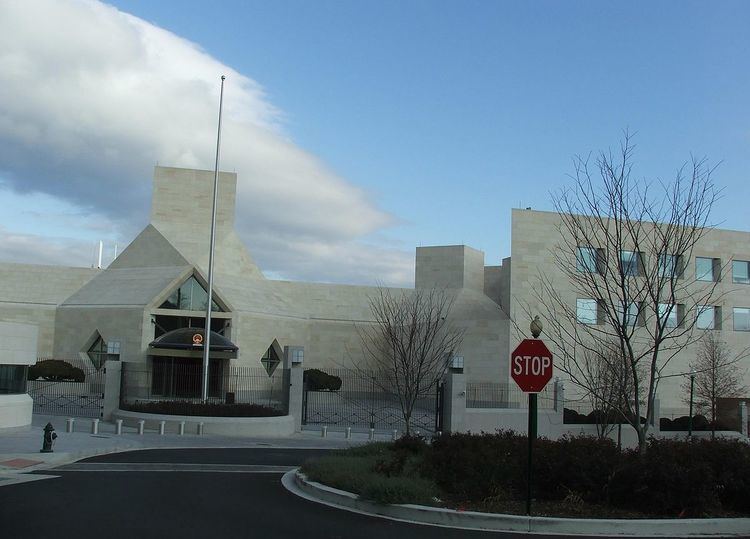Location Washington, D.C. Ambassador Cui Tiankai | Phone +1 202-495-2266 | |
 | ||
Address 3505 International Pl NW, Washington, DC 20008, USA Hours Open today · 9AM–5:30PMThursday9AM–5:30PMFriday9AM–5:30PMSaturdayClosedSundayClosedMonday9AM–5:30PMTuesday9AM–5:30PMWednesday9AM–5:30PM Similar Embassy of Singapore, Embassy of Nigeria, Embassy of the United Arab Emir, Embassy of the Arab Republic, Embassy Of Israel | ||
The Embassy of China in the U.S.A., Washington, D.C. is the diplomatic mission of China to the United States. It is located at 3505 International Place, Northwest, Washington, D.C., in the Cleveland Park neighborhood.
Contents
The embassy also operates Consulates-General in Chicago, Houston, Los Angeles, San Francisco, and New York City.
The Ambassador is Cui Tiankai, who was appointed in April 2013. The previous ambassador was Zhang Yesui.
History
The Qing Empire opened its first mission to the U.S. in 1875, with Chen Lanbin as Minister. From 1886 to 1893, the legation was located in Stewart's Castle on Dupont Circle, then under Minister Wu Tingfang in the former mansion of Thomas Franklin Schneider at 18th & Q Street, NW.
In 1902, the Qing legation moved to a purpose-built mansion designed by Waddy Butler Wood on 2001 19th Street NW. It is the oldest extant building erected in Washington by a foreign government, following the demolition in 1931 of the former British Legation on Connecticut Avenue, built in 1872. This became the legation of the Republic of China following the fall of the Qing Dynasty in 1912. In 1935, the legation was upgraded to an embassy, and Alfred Sao-ke Sze became China's first ambassador to the U.S. The embassy remained in the same building until 1944, then moved to the former Fahnestock Mansion designed by Nathan C. Wyeth on 2311 Massachusetts Avenue NW (now the embassy of Haiti), where it stayed until the late 1970s.
When the US established diplomatic relations with the People's Republic of China, a liaison office was first established in 1973, led by Huang Zhen. It occupied two adjacent former apartment buildings at 2300 and 2310 Connecticut Avenue NW, and in 1979 became a fully-fledged embassy. These buildings were torn down in 2012 (except a 1922 façade on Connecticut Avenue) and are being replaced by an apartment house for Chinese embassy employees.
The current building in the International Chancery Center was built in 2006-08 on a design by Pei Partnership Architects, with I. M. Pei as consultant.
Street Name Controversy
In 2014 a proposal was made in the United States Congress to rename the street in front of the Chinese Embassy after the Chinese dissident Liu Xiaobo. This would make the embassy's new address "1 Liu Xiaobo Plaza". On February 12, 2016, the senate passed the proposal unanimously. On February 16, the administration announced that US President Barack Obama will veto legislation for the renaming act.
